|
Above: The post-World War Two only 'Irene Craigmile' in 1977. She was
not the original Irene Craigmile, Amelia's 1930s acquaintance. It turned out she actually was the former Amelia Earhart.
By now this reality has grown to
be obvious. Presently, though, the U.S. federal government continues to remain quiet about it--leaving the Smithsonian
Institution and the National Geographic Society no choice but to influence the public not to pay attention to it. ~~~
The
Reality of Amelia Earhart Versus 'Freedom of the Press' How the post-World
War Two only Irene Craigmile-Bolam's, "I am not a mystery woman and I am not Amelia Earhart" statement she
made to the press--combined with her five-year defamation lawsuit--kept her from having to reveal her former identity.
By Tod Swindell © 2020
In
the United States, “Freedom of the Press” is protected by the First Amendment of the Constitution. It
is intended to prevent the government from interfering with the distribution of information and opinions. Here's how it
reads:
|
Amendment I. Congress shall make no law respecting an establishment
of religion, or prohibiting the free exercise thereof; or abridging the freedom of speech, or of the press; or the right
of the people to peaceably assemble, and to petition the government for a redress of grievances.
|
There are caveats to the amendment for defamation or libel
law, a lack of protection for whistle-blowers, the U.S. Federal Government's right to disallow public access
to potentially compromising information regarding foreign relations or national security, and constraints caused
by public hostility to journalists. Heavy-handed (often 'pseudo') authorities whom pontificate on certain 'national news' subject matters--and demonstrate loyalty to the U.S. federal government's viewpoint while doing so--sometimes influence or outright stifle
'freedom of the press' reporting. (Think 'national news lobbyists.') An effort to steer the news media in a politically correct direction might be referred
to as, 'playing ball with Uncle Sam.' Hindsight recalls examples of this occurring during the Watergate scandal and the Pentagon
Papers leak, until the news white-washing efforts fell apart as justice prevailed. With all that has been learned about it in decades gone by, it is clear the same kind
of practice became standardized toward the topic Amelia Earhart's 1937 disappearance and missing person case. Or try looking at it this way: The U.S.
federal government's strong double-play combination of the
Smithsonian Institution and the National Geographic Society has never failed to 'turn two' anytime an 'Earhart truth' batter
reached first base. The reason has to do with one of the caveats mentioned above: A right to disallow public access to potentially compromising information regarding foreign
relations or national security. To explain how Amelia Earhart's world flight outcome applied to such a caveat, we need to go back to August of
1945, when Japan surrendered to the allied forces just days after the U.S. dropped atomic bombs on Hiroshima and Nagasaki.
Following its capitulation, a post-war pact between Japan the United States was forged to cover the reality of Amelia Earhart's 1937
world flight outcome. Initially, three of the main players were the U.S. Army's General Douglas MacArthur, Japan's Emperor
Hirohito, and the U.S. federal government's FBI Director, J. Edgar Hoover. By way of said 'pact' the reality of Amelia Earhart's disappearance was to indefinitely
remain status-quo as viewed by both countries. It left it where, unless the U.S. federal fovernment was to direct Japan to join
forces with it in an effort to 'come clean' about what really happened to Earhart and Noonan in early July of 1937, (and
afterward) then the conveyance that they 'disappeared without a trace' in 1937, and were left for 'dead' would always remain. To not conceptualize the veracity of this statement is to not be familiarized with
the recorded facts of their premature world flight ending and Japan's involvement with it. As U.S. Navy Admiral Chester
Nimitz admitted years ago, it was "known and documented in Washington" that Amelia Earhart and
Fred Noonan were "picked up" by Japan in the Marshall Islands. Most anyone who was aware of this, however, including
Admiral Nimitz, remained uncertain of what became of the duo after they were sequestered under Japan's stewardship. Here, consider the boxed quote below from
aviation historians, Marilyn Bender and Selig Altschull's 1982 book, The Chosen Instrument. As well, underneath it
is a sample from a 1987 commemorative stamp series issued by the Republic of the Marshall Islands. Recall how the Marshall's had existed
under Japan's governing authority from the end of World War One until the end of World War Two. Then next to the stamp, find
a 2002 quote from its U.N. Ambassador, Alfred Capelle, who commented on the way his country commonly recalled Amelia Earhart
and Fred Noonan's flight ending before they were rescued:
|
"Numerous investigations foundered on official silence in Washington
and Tokyo, leaving the true fate of Amelia Earhart and Fred Noonan an everlasting mystery." 1982, aviation
historians, Marylin Bender and Selig Altschul on the 1937 disappearance and subsequent missing person case of Amelia Earhart,
quoted from their book, The Chosen Instrument.
|
Here, it is imperative to recall how the missing person case
of Amelia Earhart was closed when she was declared 'dead in absentia' in early 1939. A few months before she
was, Fred Noonan had been declared 'dead in absentia' as well. It is important to remember this because to
this day said 'dead in absentia' declarations have never been reversed. That's the U.S. federal government's basic legal
viewpoint of it. So the still maintained official viewpoint
by the U.S. federal government is this: Amelia Earhart and Fred Noonan went missing in July of 1937 and less that two years
later they were both legally presumed to be dead. End of story. Cut to the 1971-1975 lawsuit that ended by summary judgment; the one that listed Mrs.
Irene Craigmile-Bolam [AKA, 'the former Amelia Earhart'] versus the McGraw-Hill Publishing Company, writer Joe Klaas, and investigator Joseph A. Gervais. In her
case against them, Mrs. Craigmile-Bolam's high-powered attorney, Benedict Ginsberg, resorted to a recently established legal precedent
to justify the former Amelia Earhart's defamation case against the defendants. The legal precedent was drawn from the New York Times vs. Sullivan in 1964, where the Supreme
Court ruled when a publication involves a public figure, to support a suit for libel, the plaintiff [Mrs.
Craigmile-Bolam in this case, who instantly became a public figure when a nationally published book outed
her as the former Amelia Earhart] bears the burden of proving that the publisher acted with malice by not exercising
due diligence that would have identified the inaccuracy of a statement or statements, and thus exhibited a reckless disregard
for the truth. In Mrs. Craigmile-Bolam's
case, she and her attorney did not sue McGraw-Hill, Joe Klaas, and Joseph A. Gervais for asserting she was previously known
as 'Amelia Earhart.' Rather, they came up with a strategy reliant on the above precedent--and it
enabled them to prove her defamation case by citing 'reckless and misleading information' presented in McGraw-Hill's
1970 published book, Amelia Earhart Lives. While the book had correctly asserted Irene Craigmile-Bolam's
post-World War Two existence as the former Amelia Earhart who had assumed a different identity,
an assertion based on five-years of investigative research conducted by Joseph A. Gervais, the book was written and published without
her cooperation, endorsement, or authorization. She and her attorney were therefore able to pick it apart
and in the process the identified falsehoods, misconceptions, suppositions, and several awry suggestions the book contained,
and so much became its undoing.
|
Amelia Earhart
|
Amelia and her future 'Irene' self combined
|
The former Amelia Earhart living as the post-World
War Two only Irene Craigmile at her 1970 press conference. She had no choice but to deny her famous past.
|
Above: When this article ran on July 24, 1974 (Amelia
Earhart's 77th birthday) few appeared to notice the significance of how four years into her libel suit against publisher McGraw-Hill
and the authors of the book, Amelia Earhart Lives, the question over who Mrs. Craigmile-Bolam really was, or used
to be, was still, "up in the air."
|
|
|
|
| AMELIA & HER FUTURE 'IRENE' SELF IN 1965 COMBINED |
|
One libelous example cited in the book, Amelia Earhart Lives, was where it incorrectly referred
to the post-war only Irene Craigmile-Bolam's (FKA Amelia
Earhart) later-life husband, Englishman, Guy Bolam, as her "alleged" husband, thus implying she
had been living with him out of wedlock. The book also stated, (recklessly, without providing evidence of it) how in the 1960s,
the couple had lived on some property in New Jersey that belonged to Floyd Odlum, a co-financier of Amelia's
last flight. Another example that was revealing of
her personal acknowledgement of herself as the 'former' Amelia Earhart, was where she and her attorney cited the book's implication
that she was perhaps a "traitor to her country" by postulating she may have lived comfortably in Japan's Imperial
Palace during the World War Two years. Lastly,
the book also implied she might have had something to do with the infamous 'Tokyo Rose' war-time radio broadcasts,
that only further stoked her ire. Because
Mrs. Craigmile-Bolam was able to present she and her recently deceased British husband, Guy Bolam's 1958
marriage license to prove they had been legally married, and where there was no proof to the allegation of her possibly
having resided in Japan's Imperial Palace during the war years--or to the allegation that she had possibly
been involved with the Tokyo Rose scenario, the New York Supreme Court handily ruled in her favor. Therefore, after five-years the case ended when its summary
judgment particulars were rendered: McGraw-Hill was ordered to pay Mrs. Craigmile-Bolam
$60,000 for the non-supported
insinuations the book Amelia Earhart Lives contained. Oddly enough, however, she settled her case against Joe Klaas
and Joseph A. Gervais, by complying with a stipulation that stated ten-dollars of consideration was to be
exchanged between them. [This kind of 'equal consideration exchange' settlement may be advised when summary judgments consider
the finality 'a draw.'] Accordingly,
Mrs. Craigmile-Bolam agreed to the even exchange after Joseph A. Gervais asked his attorney to request her
fingerprints; a request she ultimately refused to comply with to prove her identity. It was also true that her original defamation
suit had requested over a million dollars in damages. In essence, by refusing to submit her fingerprints to prove she was
not the former Amelia Earhart, she spared Joseph A. Gervais and Joe Klaas from having to pay her anything at all. It is further interesting to note that whenever Mrs. Craigmile-Bolam
denied herself to be Amelia Earhart in the present tense, technically she was telling the truth since she had legally
been known as "Irene" for a quarter century by 1970. However, it is on record that when she was asked by a later-life
good friend of hers, LPGA promoter, Peter Busatti, if she used to be Amelia Earhart (?) she replied by saying, "When
I die you'll find out." [Note: In 1982, Peter Busatti went
on record when he said his friend, Irene, was a "dead ringer" for Amelia Earhart and he sometimes wondered if she
actually used to be the world famous pilot.] Another curious reality exists where few if any individuals from within the public realm today are aware
of when the former Amelia Earhart actually died. In 1982, a photo of the surrogate mother of the original Irene Craigmile's
son, who had been attributed to the same 'Irene' identity the former Amelia Earhart was after World War Two,
appeared on the cover of Irene Craigmile-Bolam's Memorial Dinner program. The photo had been supplied by
her son, who positively identified her as his 'late mother.' No one caught it back then, but the Irene Craigmile-Bolam
whose photo appeared in the 1970 book, Amelia Earhart Lives (the former AE) was recognizable with the naked eye, beyond
the way it was forensically realized later, as a different human being than the one who appeared on the 1982 Memorial
Dinner program cover. This is true, even though history claimed them to have been one in the same person:
Above: The two different post-World War Two
individuals who were attributed to the same 'Irene Craigmile-Bolam' identity. The one on the left was the former Amelia Earhart
in 1965, as she appeared with her British husband in the 1970 book, Amelia Earhart Lives, a book she and her lawyer
successfully fought to have withdrawn. The one on the right, featured on the memorial dinner program cover, was the surrogate
mother of the original Irene Craigmile's 1934 born son. She died in 1982. In 2006 and again in 2014 she was positively identified
by her son as as the mother he recalled in both younger and older forms. She looked nothing like Amelia Earhart.
Wrapping
it up, Amelia Earhart became 'a missing person' in 1937, and she was declared 'dead in absentia' in 1939. Yet she actually
continued to quietly live-on and in time she assumed the left over identity of Irene Craigmile, a 1930s acquaintance of hers.
Joseph A. Gervais discovered this truth in the mid-1960s, although it was never put to the acid test until after
the forensic comparison study commenced in 1997. When the comprehensive study was finally completed in 2017, its stark results
became too hard to deny, let alone ignore:
Below: The same human being shown with different names
in different eras. As hard as this is for some to believe, it really is that simple to explain.
|
|
|
|
|
|
| AMELIA LIVING AS 'IRENE' IN 1965 |
|
Shown again below at her November of 1970 press
conference where she, 'handled the press like a pro.' Necessarily, she denied she was Amelia Earhart in the present
tense even though she used to be the famous person of that name.
|
"God, the world hounded that woman after she became famous."
A quote from famous pilot, Jackie Cochran, recalling her friend, Amelia Earhart. Jackie also mentioned that during the year
Amelia was prepping for her world flight she was, "closer to Amelia than anyone else, even her husband, George Putnam."
Jackie's husband, Floyd Odlum, helped finance Amelia's 1937 world flight effort.
|
November, 1970, the former Amelia Earhart, AKA 'Mrs. Irene
Craigmile-Bolam' was ready to take on
the press in order to preserve her dignity and the heroic legacy of who she used to be.
|
"I am not a mystery woman and I am not Amelia Earhart."
Mrs. Irene Craigmile-Bolam was convincing
when she stated this at her press conference in response to the assertion made by Joseph A. Gervais, featured in the book,
Amelia Earhart Lives (shown above in the foreground.) Although her present-tense denial was accepted then, decades
later a thorough analysis of her background revealed that she appeared nowhere as 'Irene' prior to the mid-1940s. This was
furthered by physical and character trait alignments that delivered it to a state of 'obvious' where she had previously been
known as, 'Amelia Earhart.'
|
"In 1970, after the post-World War Two only
Irene Craigmile was outed as the former Amelia Earhart, her future would have been significantly compromised had she publicly
acknowledged her famous past. So much explaining, to include on a certain international level, would have been demanded. This
is why going forward after 1970, hindsight reveals she did the right thing by denying her true past anytime someone tried
to pin her down about it." Tod Swindell
|
Amelia Earhart
|
With Amelia's and the post-war only Irene's head-to-toe
physical beings and character traits, The Forensic Comparison Study realized a complete match.
|
The post-World War Two only,
Mrs. Irene Craigmile Bolam, FKA 'Earhart'
|
|
Amelia Earhart
|
Amelia and Amelia as 'Irene' in 1970
|
|
Above, the former Amelia Earhart living as 'Irene' in 1976.
|
"I had
a career as a pilot once, Major, but I gave all that up years ago." 1965 quote from the post-World
War Two only Mrs. Irene Craigmile-Bolam, FKA 'Amelia Earhart' as spoken to Major Joseph
A. Gervais, USAF (Ret.) Above photo taken in Jamaica in 1976. (Courtesy
of the Diana Dawes collection.)
|
|
Above: Amelia Earhart. Below: Amelia Earhart and her later
life self of 'Irene' combined.
| Superimposed |
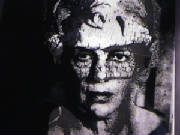
|
| 1923, 1978 |
|
| Superimposed |
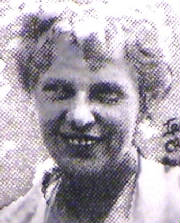
|
| 1933, 1965 |
|
| Superimposed |

|
| 1928, 1963 |
|
| Superimposed |
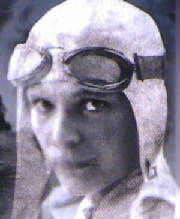
|
| 1932, 1976 |
|
| Superimposed |
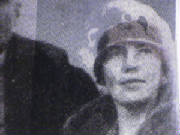
|
| 1928, 1977 |
|
|

Right, Amelia Earhart, age 31...
|
...superimposed into...
|
...her later-life self, proudly
adorning her wings, Mrs. Irene Craigmile-Bolam [No 'ordinary housewife']
|
Above:
A sentence excerpted from a 12/27/44 dated document found in the fifty-nine page, "World War Two FBI file"
on Amelia Earhart. The full two-page document referenced a detailed interview between an FBI agent and a former POW who had
survived the infamous Bataan Death March, and then narrowly escaped after his Japanese military POW transport ship was struck
and came apart off the coast of the Philippines. The soldier described how just before the 1941 Pearl Harbor attack while
he was stationed in the Philippines, he had gleaned information from Japanese personnel there, "to the effect" that
Amelia Earhart had survived her 1937 world flight ending and was transported to Tokyo where she was being held at a hotel.
The file was released after the FOIA went into effect. The particular excerpt above refers to when the soldier was a POW and
part-time worked as a typist for a Japanese intelligence officer, who the soldier mentioned was "taken back" when
he asked the officer about Amelia Earhart (incorrectly spelled "Earhardt") prompting the officer to reply that he
could not say anything beyond, "Don't worry about her well being, she is perfectly all right." Both the soldier's
name and the FBI agent's name were blacked out by the FBI throughout the document before it was released via the FOIA. [Note: Several documents in the complete fifty-nine page file referenced information
pointing to the continued survivals of both Amelia Earhart and her navigator, Fred Noonan, and descriptions pertaining
to where their plane likely ended up.] ~~~
|
|
| The former Amelia Earhart in Yugoslavia in 1976 |
|
|
|
~~~ A Remarkable Twenty-Year Journey From the mid-1990s
on, Tod Swindell analyzed and expounded on the previous investigative research efforts of Paul Briand, Joe Gervais,
Fred Goerner, Vincent Loomis, Randall Brink, Donald Moyer Wilson, and Rollin Reineck. Each had
devoted decades to unconvering the non-conveyed realities of Amelia Earhart's last flight, with their individual efforts resulting
in the following published works:
| Randall Brink's 1993 'Best Seller'... |
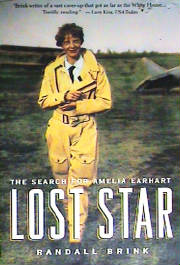
|
| Proved a White House cover-up; concluded Amelia ended up in the Marshalls and continued to survive |
|
| The Vincent Loomis account... 1985 |

|
| Also concluded Amelia ended up going down in the Marshall Islands |
|
To those who dismissed or buried the above credible
accounts in pursuit of pecuniary interests: 'There is only one truth.'
Note: Do not succumb
to the misguided offerings of Amelia Earhart plane-hunting, or 'mystery hyping' cottage industries such as TIGHAR, Nauticos,
Chasing Earhart and the like. Over the years a number of privately run, 'glitzy' looking clubs intent on pecuniary interests
have promoted misleading ideas about Amelia's 1937 flight ending to the general public. Their common effort only managed to
confuse the public when it came to the non-publicized reality of Amelia Earhart's post-loss, ongoing survival as 'Irene.'
Amelia Earhart 'cottage industries' such as these recognized a way to claim a kind of 'vocational proprietary stance'
where public interest in Amelia's last flight inspired their objective to receive donations from those less informed about
it. They tend to exist as non-profit organizations and some actually have happened on some interesting wrecks while searching
for Amelia's plane, but they originally built their company profiles, some decades ago, by exploiting the so-called "mystery
of Amelia Earhart's disappearance" to their financial advantages, well before the forensic analysis solved Amelia's 'missing
person case' in the new millennium. Those who run these particular cottage industries, especially the ones that are primarily
devoted to 'finding Amelia's plane' legally pay themselves handsome wages from the donations they receive through the non-profict
organizations they created, and this practice really needs to stop. People tend to be hopeful when
they here the call of a new Amelia Earhart mystery solving claim, and some have donated huge sums of money over the years
reliant on their beliefs in, 'we feel we know where her plane ended up' offerings. It is imperative to identify here,
that Amelia recalled the last time she saw her plane, even while she was living as 'Irene' in her later life years, and it
certainly wasn't resting somewhere on a deep ocean floor when she did. TS
One Filmmaker's Amazing Amelia Earhart Journey....
A personal message from Tod Swindell, orchestrator
of the first ever, Amelia Earhart & Irene Craigmile Bolam 'Forensic Research Study and Human Comparison Analysis.'
In
describing myself I'd say I'm an artist who has always believed in the motion picture medium as the most powerful tool available,
especially when it comes to delivering profound insights and thought provoking themes to worldwide audiences. I come by this persuasion honestly; my father is a noted motion picture historian. My passion for filmmaking as a narrative art form initially materialized in 1982. That year I
wrote, produced, and directed my first black and white 16MM film. I rented an Arri BL and a Nagra for two days to get it don,
having been tutored on how to use both. I was twenty-three at the time. The twenty-minute reel I made was a comedy called, "A Wrench In The Works." Making it was a lot harder than I thought it would be, but you have to start somewhere. I shot my less-than epic saga on an egg farm in New Hope, Pennsylvania with some friends. Its premise was as
basic as it was funny; the egg grading machine goes haywire after a wrench falls into it and mayhem ensues. Admittedly, I
'crossed the line' a couple of times while making it, not to mention its small cast and crew ensemble was grossly underpaid
and the clean-up wasn't so great to contend with. But it was a fun experience for all. Plus I learned what filmmaking term,
'crossing the line' meant in the process of making it. I shot a few more amateur-level short films before my professional career began to revolve in the motion picture industry--mostly as a research and development specialist--although I worked on the production end of many
other film assignments as well, and off-times served as a freelance journalist.
It's
not surprising that few people recall Joe Gervais anymore. After all, Amelia Earhart's incomplete life story grew to be somewhat
of a taboo subject matter since the 1970s, something caused by Joe himself. Today, people who take the time to look
into the 1937 disappearance of the famous pilot, Amelia Earhart, are more in step with my personal rejuvenation of Joe's mind-bending
contribution to Amelia Earhart investigative research studies; a contribution that in time grew to be viewed as 'infamous'
in contrast to Joe's intuitive brilliance that spawned it. Because of this general consensus, most people find it hard to understand my viewpoint when
it comes to the story of Amelia Earhart's officially unresolved (according to history) but in recent years, solved
in a cumulative forensic way, 'missing person' case. Sounds crazy, no? Yet it's true. When Amelia Earhart
purportedly disappeared in 1937, in legal terms she actually became a 'missing person.' I noticed people had lost
sight of that in the giant mystery cloud hanging over the unknown circumstances of what happened to her. Joseph A. Gervais? In
1965, he encountered the woman who used to be known as Amelia Earhart and he spent the remainder of his days making
sure people did not forget he had done so--even to the endless stream of combatants he faced that abetted official history--when
it came to all-but burying the important discovery he made. Regardless, nowadays a person would be hard pressed
to find anyone at the Smithsonian Institution, at the National Geographic Society, or on Capitol Hill who will freely volunteer
an opinion that states they are certain Joseph A. Gervais was incorrect to have claimed what he did way back then, and samplings
of the study results I made public in recent years are the reason for that. Many of you are now asking: "How is it that Amelia
Earhart's missing person case is being referred to as "solved" anymore and people in general are still unaware of
it?"
I'll cut to the chase: It took almost fifty years for it to ultimately happen after initial efforts
to do so began in the summer of 1965, but for all intents and purposes, Amelia Earhart's missing person case ultimately
was conclusively resolved, or solved over the course of the past decade--even though said truth still remains to
be officially endorsed to the public. And there are a lot of reasons for that. (Incidentally, the same long-time 'lack
of official endorsement' occurred with Charles Lindbergh's 'Careu Kent' alias that he used for decades, until it was ultimately
confirmed in 2004, thirty years after he died.) Let me further explain, and I'll cut to the chase again: Since the 1980s,
Amelia Earhart cottage industries and private sleuths have been feeding news media outlets a wide variety of hypothetical
solutions within their individual attempts to explain what really happened to Amelia Earhart--that had absolutely nothing
to do with the truth. In the meantime, however, the purveyors of these off-base ideas had also long been conjointly dismissing
the missing person aspect of Amelia Earhart out of hand, that in turn managed to obfuscate the important final forensic
strides that ultimately solved it.
Myself? Beyond Colonel Reineck's above words about my accomplishment, I never personally claimed to have 'solved
the mystery' of Amelia Earhart's 1937 disappearance. Yet I did claim, and still do claim by virtue of having examined
it closely since the 1990s, to have helped solved the missing person case of Amelia Earhart after my study ended up
clearly displaying how in 1965, retired USAF Major, Joseph A. Gervais did recognize the 'body evidence' of
Amelia Earhart re-identified as "Mrs. Irene Craigmile Bolam." I'm always sure to add that no one knows for certain
what Amelia was doing or where she was from the time she went missing in 1937 to the time she resurfaced in
the United States known as "Irene," although I do profess to know: To solve a missing person case one must
find the missing person, or one must find and produce the body evidence of the missing person, and how CONCRETELY,
in 1970, Joseph A. Gervais absolutely did produce the body evidence of Amelia Earhart for all the world to see. He did so
when a clear, 35MM color photograph he took in 1965 of Amelia's living, renamed body appeared in the 1970 nationally
published book, Amelia Earhart Lives by Joe Klaas. No, in 1965 the former Amelia Earhart wasn't expecting it and she
did not give Major Gervais permission to take the photograph when he asked her if he could, but he snapped his camera shutter
anyway right as she turned to him to politely say, "no thank you" to his request. After she realized he took the
picture anyway she quietly said to him, "I wish you hadn't done that." But he did do it. In the full frame version
(below) of the photo that appeared in the book, you can see the former Amelia Earhart's English husband who she wed in 1958,
Guy Bolam, finishing advising her that he, "didn't think it was a good idea" in response to Joe Gervais' request
to photograph them. I'll recommend that you not pay attention to the rest of the book Amelia Earhart Lives
for now in favor of concentrating instead on the 1965 Joe Gervais taken photograph of the woman that appears in it.
Do this as if you're watching the Zapruder film of the Kennedy assassination and observing the stark reality its film gamma
conveys. In other words, concentrate very hard on the Gervais photograph only, and think as deeply as you can about it, while
accepting the known fact that the woman featured in it appears nowhere identified as "Irene" prior to the end of
World War Two. Directly below is a 1937 photo of Amrlia Earhart shown transitioning into the 1965 Joe Gervais
photograph of the post-World
War Two only Irene O'Crowley Craigmile Bolam. Underneath the panel is an enlargement from the original color negative, along
with a few more of my analysis' comparison examples. They display only part of the overall head-to-toe
body and character trait congruences the other comparisons edified:
Hey, think about your own life and the way it was photographically
recorded from the time you were born, then think about this: What is clearly evident by virtue of what the comparison study
I orchestrated revealed, is that the woman identified as Mrs. Irene Craigmile Bolam in the 1965 Gervais photograph (and
at her press conference) appears nowhere in photographs identified as "Irene" prior to the World War Two years,
and, the study also displays how physically and character trait wise, the same woman matched Amelia Earhart's entire being
to exactitude. People
still arguing or outright fighting against the proof I delivered that edifies these realizations (you know who you are...)
or people looking for reasons to doubt it all are in denial and cannot be helped, unless they help themselves by looking
at the old Amelia Earhart missing person case differently than they have done before. As well, while what
became of Amelia's long ago acquaintance, the original Irene Craigmile, still remains unknown, she is the actual person
who ended up missing forever those years ago. By virtue of the study results, this is evident now too. Simply put, Joseph
A. Gervais was absolutely correct all those years ago when he unequivocally stated that Amelia somehow managed to live on
after she went missing in 1937, and her entire earthly being was later attributed to her old friend, Irene Craigmile's
left over identity for herself to use for the remainder of her days. As mentioned he kept repeating this truth he knew
to others from 1970 on, to include throughout Irene's five-year defamation law suit against him, and all the way to his
dying day in 2005. [Note:
Irene did not sue Joe Gervais nor publisher McGraw-Hill for implicating her as the former Amelia Earhart. She sued them
for some inaccurate statements in the book, Amelia Earhart Lives that she felt were damaging to her character. After
she refused to submit her fingerprints as proof-positive of her identity, she settled with Gervais and author, Joe Klaas for
ten dollars consideration she paid to them and they each paid to her. She originally sued publisher McGraw-Hill for $1.5 million
but ended up only being rewarded $60k for its failure to better vet the information it allowed to be printed about her. For
example, in the book, Joe Klaas referred to her husband, Guy Bolam, (who died earlier in 1970) as her "alleged husband,"
and she was able to produce her 1958
marriage license as proof they had been legally married.] Even though the book,
Amelia Earhart Lives turned into somewhat of a train-wreck, it's author, Joe Klaas, was a brilliant writer who knew
how to lure people into the 'I found her' claim made by Joe Gervais. Hindsight, however, tells us that his book delved too
much into trying to explain howAmelia ended up where she did and what she was doing while she was missing, where it ought
to have worked on better identifying her renamed body that Joe Gervais clearly photographed in 1965. But no one is to blame
for that. The former Amelia Earhart proved far too strong and resourceful in her defiance against the book.
I am proud to have known
Joe Klaas, who was a past World War Two prisoner of war held by Germany for twenty-five months. I am also very proud to
have known Joseph A. Gervais. He was a war hero who flew combat missions in World War Two, Korea, and Vietnam before the
Air Force honorably retired him as a Major in 1963. He was also a respected family man known for his good character. Oh yeah, by the way,
it is easier for people to accept this now identifiable reality about Amelia Earhart if they don't automatically reject
it just because they are encouraged by others to do so. Rather, people ought to think for themselves about the information
displayed in Irene-Amelia.com, and perhaps wonder in some kind of ethereal way, (as blatantly obvious as the 'Amelia
became Irene' truth is now) if the universe of Amelia herself has worked its way back in order to be recognized for
the full life-long person she ended up being. If you have a hard time believing that... then take it from one who
knows; living as 'Irene' in her later life years, especially in the 1960s and 1970s, the former Amelia Earhart clearly
emulated the great individual human being she was known to be, until she died in 1982. In contrast to this, my in-depth
research on the original Irene Craigmile illustrates that it would have been all-but impossible for her person to posture
herself in such a 'proud Amelia image way' had she lived a full life.
In 1998, as the former Amelia
Earhart's later-life sister in law described her to be, "She had a commanding presence," and "She was the
epitome of a classy lady." As well, John Bolam, her survived brother in law, was well settled on his own determination
that she could only have been the former Amelia Earhart years before he died in 2008. And
I'll add to that; the post-war only Irene O'Crowley Craigmile-Bolam, most definitely had been, previously known as, "Amelia Earhart."
Above,
four books that played key parts in Tod Swindell's Earhart research history. Fred Goerner's 1966 groundbreaking classic, The
Search For Amelia Earhart was originally inspired by the Earhart investigative work being done by USAF Captain, Joseph
A. Gervais in the early 1960s. 1970's Amelia Earhart Lives by Joe Klaas featured the original postulation of Joseph
A. Gervais, (who had retired from the Air Force as a Major in 1963) where Gervais asserted his belief in Amelia's non-recognized
ongoing existence in the U.S. with the name of 'Irene Craigmile Bolam,' something he would never stop asserting to his dying
day. Tod Swindell and Joe Gervais met and became friends in 1996 and were collaborators from that point on as well, until
Joe's passing took place in 2005. Randall Brink's 1994 book, Lost Star caught Tod's eye where Brink commented on the
ongoing controversy over Irene Craigmile Bolam, who had died in 1982, as a "tantalizing persistent account" when
it came to various explanations offered about Amelia's true fate. Brink, a good friend of Tod's and a Pacific Northwest neighbor
of his as well, originally introduced him to Gervais. In turn, retired USAF Colonel Rollin C. Reineck soon came to know Tod
through Joe Gervais. Colonel Reineck was first to elaborate on Tod's in-progress forensic study when his book, Amelia Earhart
Survived was published in 2004. In it, Tod permitted the Colonel to
reproduce portions of his study, to include the initial human separation part that proved there was more than one woman historically
identified as the same, 'Irene Craigmile Bolam.' The book below, Legerdemain by David Bowman that was published in
2006, featured one of Tod's study overlays on its cover and credited his Irene-Amelia comparison analysis as the first one
achieved.
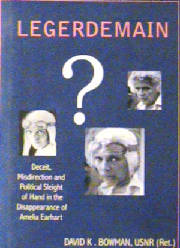 |

